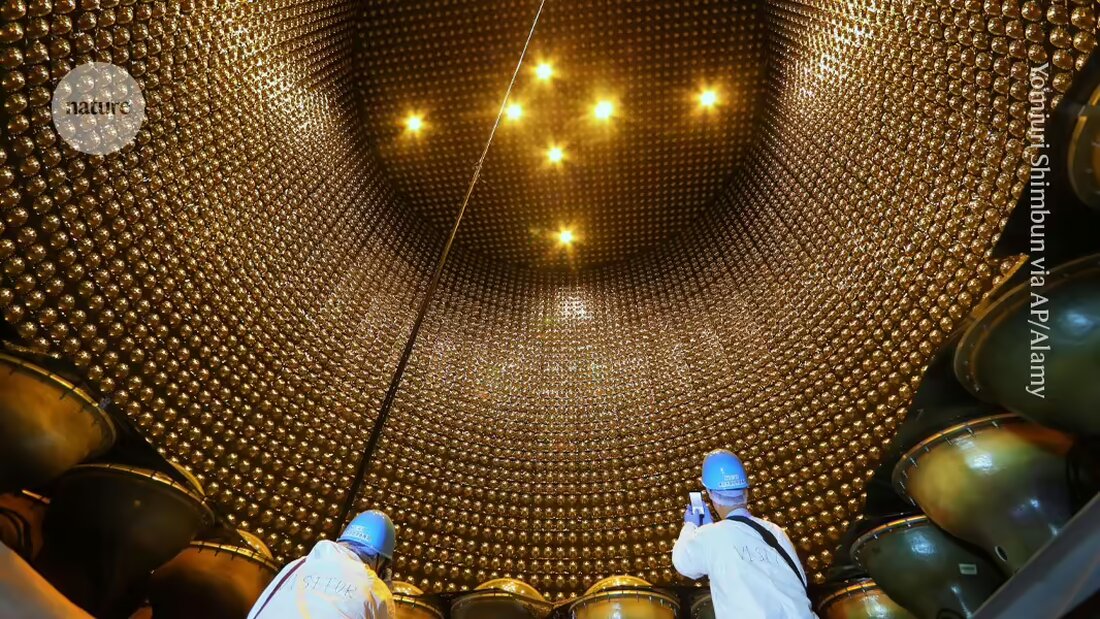Every second, somewhere in the observable universe, a massive star collapses triggers a supernova explosion. According to physicists, the Super-Kamiokande observatory in Japan could now detect a steady stream of neutrinos from these disasters collect, which could amount to a few discoveries per year.
This tiny subatomic particles are crucial to understanding what happens in a supernova: as they shoot out from the star's collapsing core and fly through space, they can provide information about potentially new physics that might occur under extreme conditions.
On the last one Neutrino 2024 conference in Milan, Italy, Masayuki Harada, a physicist at the University of Tokyo, revealed that the first evidence of supernova neutrinos appears to come from the chaos of particles that the Super Kamiokande detector collects every day from other sources, such as cosmic rays hitting the atmosphere and nuclear fusion in the Sun. The result suggests that "we have started to observe a signal," says Masayuki Nakahata, a physicist at the University of Tokyo and spokesman for the experiment, commonly referred to as Super-K. However, Nakahata warns that the supporting data - collected over 956 days of observation - is still very weak.
Volatile particles
Neutrinos are extremely elusive. Most pass through the planet like light through glass, and Super-K only captures a tiny fraction of those that cross it. Still, the detector has a good chance of detecting neutrinos from supernovae, since the universe should be flooded with them. The collapse of a star releases massive amounts of these particles (estimated at about 10^58), which astrophysicists call the diffuse supernova neutrino background.
However, so far no one has been able to prove this background. Neutrinos were only created once clearly traced back to a collapsing star – Nakahata was one of the researchers who discovered the particles in 1987 using the Kamioka II detector, a predecessor of Super-K. The discovery was possible because the supernova occurred in the Large Magellanic Cloud, a dwarf galaxy close enough that the exploding star's neutrinos reached Earth in large numbers.
In 2018-2020, the Super-K detector, a tank containing 50,000 tons of purified water beneath a kilometer of rock near Hida on the central island of Honshu, underwent a simple but important upgrade aimed at increasing its ability to distinguish supernova neutrinos from other particles.
When a neutrino - more specifically, its antiparticle, an antineutrino - collides with a proton in water, that proton can transform into a pair of other particles, a neutron and an antielectron. The antielectron produces a flash of light as it moves at high speed in the water, and this light is captured by the sensors surrounding the walls of the tank. This flash of light alone could be indistinguishable from light produced by neutrinos or antineutrinos from a variety of other sources.
During the upgrade, scientists added a gadolinium-based salt to Super-K's water. This allows the neutron produced when an antineutrino impacts the water to be captured by the gadolinium nucleus, releasing a second, characteristic flash sequence of energy. Super-K physicists searching for supernova neutrinos look for a rapid series of two flashes, one from the antielectron and the second from the trapped neutron.
Solve cosmic mysteries
Nakahata says it will be several years before true supernova signals emerge clearly, because double flash signals can also come from other neutrino sources, including those caused by cosmic rays hitting the atmosphere. But by the time Super-K is scheduled to close by 2029, he adds, it should have collected enough data to make a solid claim.
A even larger experiment called Hyper-Kamiokande, expected to be completed around 2027, could massively improve Super-K's results. Initially, Hyper-K will be filled with pure water, but "all components of the detector are designed to be compatible with gadolinium," which could be added later, says Francesca Di Lodovico, a physicist at King's College London and co-spokesperson for the project.
Showing that neutrinos from distant supernovae that occurred billions of years ago are still present would confirm that neutrinos are stable particles and do not decay into something else, Nakahata says. This is something that physicists have suspected for a long time, but have not yet been able to prove.
Measuring the full spectrum of supernova neutrino energies could also reveal how many supernovae have occurred at different periods of cosmic history, Harada says. Additionally, it could reveal how many collapsing stars resulted in a black hole - which would stop the emission of neutrinos - as opposed to leaving a neutron star behind.
Super-K's data is still too faint to claim detection, but the possibility of detecting the diffuse neutrinos is "extremely exciting," says Ignacio Taboada, a physicist at the Georgia Institute of Technology in Atlanta and spokesman for the IceCube Neutrino Observatory at the South Pole. “Neutrinos would provide an independent measurement of the history of star formation in the universe.”

 Suche
Suche

